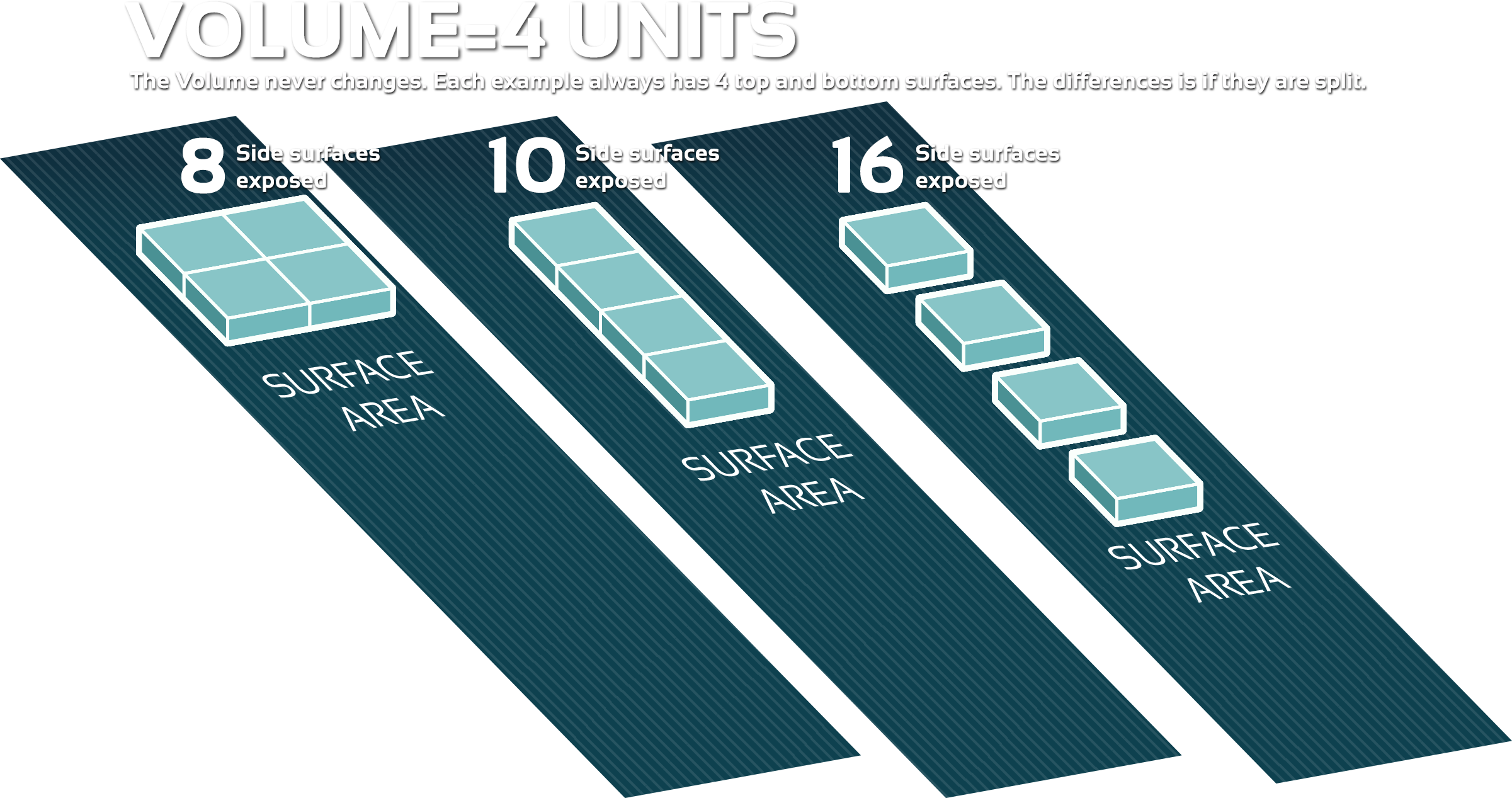Four elements impact the efficency of how much you can evaporate
Temperature & Humidity’s Impact on Capacity
As the temperature increases the amount of water a cubic meter of air can hold increases. In the graphic below the maximum amount of water is put into a cubic meter of air at 23°F.. That air is at 100% Relative Humidity. If I increase the temperature of the air the amount it currently holds doesn’t change but the capacity increases thus the Relative Humidity changes.

Air Flow: How Much Air does it take?
It takes a lot of air to hold a gallon of water. In the example below it takes all the air in 4 forty foot containers to hold just 1 gallon of water at 86°F, and that’s if the air has zero water in it already (Which is not very likely). Putting too much water in the air can lead to “Oversaturation”.
At 25°C/86°F and 0% Relative Humidity

Oversaturation & Drift
Oversaturation becomes a problem if you put more water in a given volume of air then it can hold. As a result, the water droplet has no where to go but be carried by the wind. This is what is referred to as drift and if left uncontrolled can be dangerous. Below is a chart that show how far a particle/droplet can travel..
Oversaturation=Drift
Droplet Falling from 10ft with a 3MPH Wind

Surface Area & Evaporation
By spliting the water into droplets of a known size we can increase the surface area of an equal volume of water. For example the image to the left has the same volume in all three shapes however the number of sides exposed to air where evaporation happens gets exponentially larger as the volume is broken into smaller and smaller pieces





